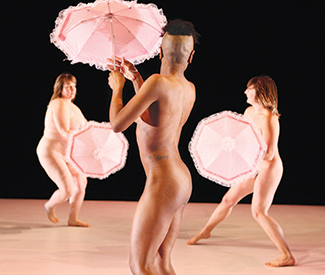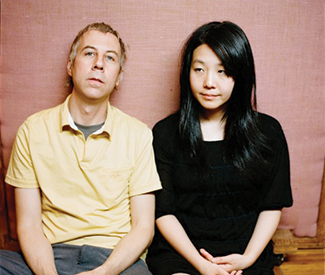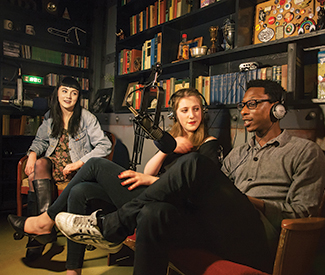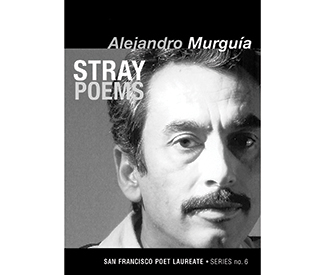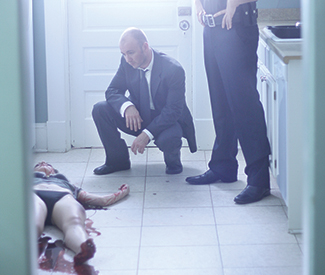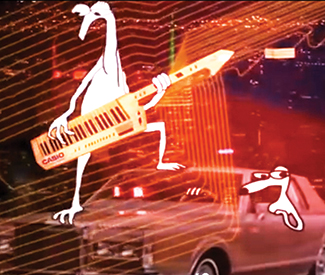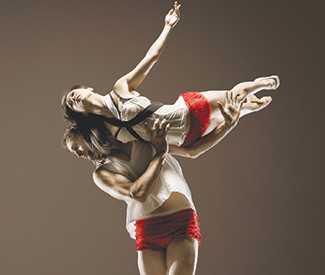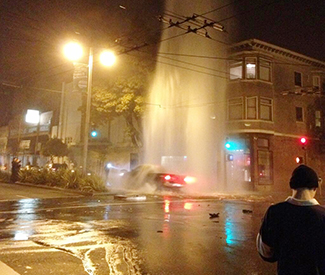Motorists driving for rideshare companies have struck and also killed pedestrians in San Francisco, even since state regulations were adopted to make these new transportation businesses safer and more accountable to the public.
Four months after the new rules were created, lawsuits from these incidents reveal that the new regulations contain gaping holes that continue to place passengers, pedestrians, and even drivers at risk.
One recent local story actually started in 2004 in Florida’s Monroe County. A vehicle sped down the Overseas highway at over 100mph. Ever seen the movie The Fast and the Furious? It was like that.
In the Florida heat, the car blazed by palm trees and an ocean view, hell bent for Miami. It accelerated as it took a curve, swerving around two vehicles going half its speed. Brazenly passing a traffic control device, the car cut off one more vehicle, then another, and another. Still barreling over 100mph, the driver swerved across the double yellow lines, forcing an oncoming vehicle to veer off the highway.
A traffic snarl put an end to the thrill ride. According to the Monroe County Sheriff’s Office incident report, which the Guardian obtained through a records request, driver Syed Muzzafar was accompanied by his wife and three children during his death-defying drive. He told the police officer, “This was just a dumb thing to do. I know I’m wrong.”
Muzzafar was booked for reckless driving. Nine years later, he would be booked again in San Francisco for hitting a family as they crossed the street in the Tenderloin.
On New Year’s Eve 2013, picking up fares for the tech company Uber, Muzzafar’s car struck young Sofia Liu, her mother, Huan Kuang, and brother, Anthony Liu. Six-year-old Sofia did not survive. Her family filed a wrongful death suit against Uber on Jan. 27, and will be represented by attorney Christopher Dolan.
Uber is part of an emerging cast of companies commonly known as rideshares, now legally called Transportation Network Companies (TNCs). The gist of how they operate is this: the company’s mobile app connects a driver with a customer, much like a taxi dispatch. Only a few years old, the TNCs initially operated in a wild west, devoid of regulation. But the California Public Utilities Commission passed rules for TNCs in September with the aim of protecting pedestrians, passengers, and drivers in collisions.
Uber, formed in 2009, has drivers in over 50 cities worldwide and an estimated worth of just over $3 billion, according to leaked evaluations. But Uber may still be in need of a version 2.0.
The death of the young Sofia Liu, killed by a driver already arrested for reckless driving, shows the state still has a long way to go on the road to regulating rideshares.
NOT MY PROBLEM
The night Muzzafar struck the Liu family, he was ferrying customers using the Uber app — but the company disavowed responsibility for the incident.
“We thank law enforcement for the quick release of information,” Uber wrote in a blog post the day after Sofia Liu died. “We can confirm that the driver in question was a partner of Uber and that we have deactivated his Uber account. The driver was not providing services on the Uber system during the time of the accident.”
But that’s a half-truth: Muzzafar was picking up passengers for Uber all night, but because he’d just dropped off a customer, he allegedly ceased being an Uber driver. With no passengers in the vehicle, Uber did not consider him “on the Uber system.”
If that sounds like a giant loophole, you’d be right — but it’s a legal one, for now.
The new CPUC regulations specify that TNCs must only provide liability insurance when drivers are “in service.” The Taxicab Paratransit Association of California is suing to modify those rules, saying the meaning of “in service” was never defined — and they allege this wording allows companies to disavow responsibility for a driver not carrying passengers at the moment of an accident.
This gaping loophole can also lead to insurance and liability consequences.
“I would guess that’s on the order of a $20 million liability case,” Christiane Hayashi, director of Taxi services at the San Francisco Municipal Transit Agency, said of Liu’s death. “The question is, who is going to pay for it?”
Muzzafar, and not Uber, may be on the fiscal hook, even though it’s unlikely he could cover the family’s medical and legal fees on his own.
Though much reporting has focused on TNC drivers’ lack of insurance, the collision that killed Sofia Liu on New Year’s Eve raises other questions as well. Just how did a driver with a reckless driving record manage to become a partner with Uber in the first place?
Checking out drivers
The recently drafted CPUC regulations require the TNCs to carry out background checks, a key element for safety. As it turns out, not all background checks are made equal.
Uber hired a private company called Hirease to conduct its checks, the Guardian learned in emails obtained from drivers. While Hirease requires Uber drivers to fill out a form with their personal information, taxi drivers who must register with the city’s transportation agency are screened with fingerprinting, Hayashi from the SFMTA told us.
The fingerprint checks make use of the FBI’s national criminal database, something a company like Hirease lacks access to (since it isn’t a government agency). We called the FBI’s background check department, based in West Virginia, to better understand the two methods.
We spoke to a rank and file employee, not a spokesperson, so he declined to give his name. The FBI employee spoke with a twang, and clearly laid out the problems.
The first snag with private background checks are false positives from common names (like John Smith) or stolen identities, he said.
Self-identification is also a problem. “If you’re a criminal, you’re not going to use your information,” the FBI employee said. “What if you were a lady and you were married six times, which name will you use for a background check? Bottom line, fingerprints are exclusive. Names are not.”
Another flaw is that while background checks performed for entities like the SFMTA make use of a federal database that dates back 100 years, California law doesn’t allow private background checks to go beyond seven years — and Muzzafar’s reckless driving arrest was nine years ago.
“Uber works with Hirease to conduct stringent background checks,” Uber spokesperson Andrew Noyes wrote to us via email. “This driver (Muzzafar) had a clean background check when he became an Uber partner.”
Hirease and Uber did what they legally could, but the summation of laws and regulations blinded Uber to Muzzafar’s background — and nothing in the new CPUC regulations would have prevented this. That may go a long way toward explaining how a man caught recklessly driving with his own family in the car in Florida was driving for Uber the night he allegedly struck and killed a child.
Importantly, California law does allow for a taxi driver to have one reckless driving incident, or one count of driving under the influence, on his or her record. But as Hayashi told us, stricter background checks make it easier for taxi companies to spot a red flag before making hiring decisions.
The relative insecurity of private background checks raises an unsettling question: How many others with reckless driving records or DUIs drive for TNC companies like Uber, Sidecar, and Lyft without the companies’ knowledge?
The results of a collision can be severe, as San Francisco’s tragic New Year’s eve incident demonstrates. But even those who survive are left with bills that Uber, allegedly, isn’t paying.
PAYING NO ONE
Last September, Jason Herrera and Nikolas Kolintzas summoned an Uber driver via smartphone, intending to hop from Valencia Street to the Marina district. Driver Bassim Elbatniji responded, and drove the pair down Octavia, where his Prius collided with a Camry.
Herrera suffered a concussion and was knocked unconscious. Kolintzas also suffered a concussion, and they both sustained injuries to their necks and backs, according to court documents.
But when the two sought financial assistance from Uber to cover their medical costs, Uber said it was the driver’s responsibility.
“As far as Uber’s concerned, their insurance isn’t providing any of this,” attorney Colleen Li told the Guardian. Li is representing Kolintzas and Herrera in their suit against Uber, which seeks damages to cover their medical bills, which reached “tens of thousands” of dollars, Li told us.
According to a policy published on Uber’s website, the company maintains a $1 million “per incident insurance policy applicable to ridesharing trips,” which is in keeping with requirements under the new CPUC regulations.
Nevertheless, Uber has not stepped up to cover damages in response to a lawsuit arising from a similar incident. Months ago, the Guardian reported on the case of an Uber driver who hit a fire hydrant, which flew through the air and struck Claire Fahrbach, a barista living in San Francisco (“Lawsuit over injury from airborne fire hydrant tests Uber’s insurance practices,” 8/8/13). She sustained lacerations to her body, a fracture in her lower leg, and multiple herniated discs, according to her lawsuit against Uber.
Her medical bills and injuries destroyed her dreams of living in San Francisco, and she moved home with her parents in North Carolina to recover. Her lawyer, Doug Atkinson, told us Uber still hasn’t paid for his client’s medical services.
“They’re still denying they have any liability for the driver,” he said. “They said they wouldn’t fight the CPUC ruling, but in our case they obviously are.”
But the hydrant also sprouted a geyser that flooded a nearby business, Rare Device, and the apartment building above it. “It was horrible. Our store flooded, we lost a bunch of inventory,” Rare Device’s owner, Giselle Gyalzen, told us.
Her insurance covered the damage, but she’s still trying to recover the deductible from Uber.
Uber directed the lawyers to its terms of service, which tell people up front that they won’t cover anything: “Uber under no circumstance accepts liability in connection with and/or arising from the transportation services provided by the Transportation Provider or any acts, action, behavior, conduct, and/or negligence on the part of the Transportation Provider.”
Meanwhile, the drivers also find themselves in a bind when it comes to obtaining insurance. Given the lack of clarity, state agencies have opted to alert TNC drivers that they’re going without a safety net.
On its website, the California Department of Insurance posted a notice warning, “TNCs are not required to have medical payments coverage, comprehensive, collision, uninsured/underinsured motorist coverage or other optional coverages.” It goes on to explain that TNCs’ liability policies aren’t required to cover bodily injury to the drivers, damages to the drivers’ cars, or damage and injuries caused by an uninsured or underinsured motorist.
And as the Guardian previously reported (“Driven to Take Risks,” 8/6/13), rideshare drivers don’t qualify for commercial insurance since their vehicles are registered as private automobiles, yet insurance companies won’t grant complete insurance coverage to TNC drivers since it’s considered an insufficient safeguard against risk.
Notably, limo drivers who also work for Uber (and get commercial insurance through those companies) don’t have this problem — just those using Uber or other rideshare apps as independent contractors. Taxi drivers are also eligible for commercial coverage.
Is there any way for an independent TNC driver to legally insure him/herself on the road? “Not that I’m aware of,” said Patrick Storm, a spokesperson for the Department of Insurance.
FIXING SAFETY
Paul Marron is an attorney for the Taxicab Paratransit Association of California, the group suing the CPUC to tighten up its regulations. In his view, a key test of the new CPUC regulations is whether they’re enforced — and with a bare bones staff, enforcement is likely to be anemic.
“The CPUC does not have the adequate resources to regulate (transportation) safety statewide,” he told us.
As a lawyer for taxi interests competing against rideshares, Marron obviously has skin in the game, so we looked at the numbers.
We compared the staff counts of the SFMTA, the CPUC, and for some perspective, the New York City Taxi Commission.
The SFMTA has 15 employees who oversee San Francisco’s 1,850 taxi cabs. That’s one staff person for every 123 cabs in the city. The NYC Taxi Commission’s staff of 569 oversees 94,500 taxis, town cars and similar liveries, according to their posted annual report. Though the numbers are greater than San Francisco, the ratio is similar: One staff person for every 166 vehicles.
Now for the CPUC. Though it is now tasked with overseeing “rideshare” TNC vehicles, the agency is also responsible for regulating limos and town cars statewide. Public documents obtained by the Guardian show it oversees 1,900 liveries in the Bay Area, and though there are no official numbers, there are an estimated 3,000 rideshare drivers in the city, according to data compiled by the San Francisco Cab Driver’s Association.
The CPUC has a staff of six based in San Francisco, responsible for overseeing an estimated 4,900 vehicles. That leaves the CPUC with one staffer for every 700 vehicles, a ratio wildly out of sync with other vehicle safety regulators.
Hayashi pleaded with the CPUC to allow cities to regulate rideshares on the local level, saying, “You don’t even have the resources to monitor this stuff.”
Sup. Eric Mar met repeatedly with the SFMTA over these concerns, and will hold a February hearing to get to the heart of the safety culture around San Francisco’s TNC rideshares.
CPUC spokesperson Christopher Chow defended its safety regulations and enforcement. “We can clarify or modify our TNC requirements, if needed, particularly the insurance requirements, as we see how the TNCs attempt to comply with the decision’s directives,” Chow wrote in an email. “If we believe there are any issues that should be addressed, we will take action.”
But as things stand, Claire Fahrbach, Giselle Gyalzen, Jason Herrera, Nikolas Kolintas and the family of Sofia Liu are all waiting for that action.
Reed Nelson contributed to this report.


